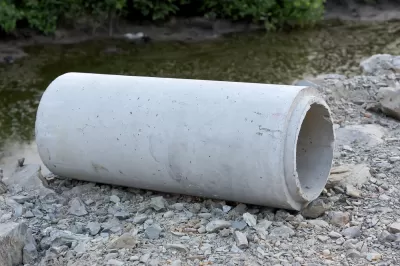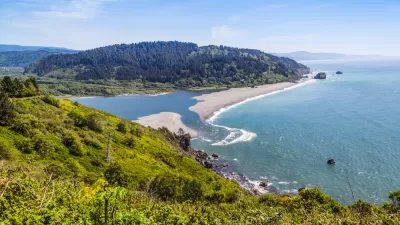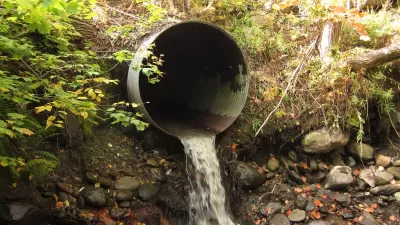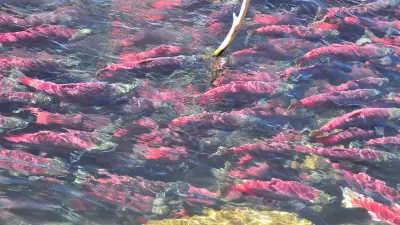Ineffective, blocked, obsolete, and in disrepair—Washington is full of culverts that pose an impediment to the survival of salmon. A court decision should have fixed the problem, but the state's budget has a long way to go to clean up the mess.

An article by KUOW takes a closer look at the engineering of culverts (i.e., the "metal pipes or concrete boxes that carry streams beneath the roadbed") in the Pacific Northwest—the source of perhaps a surprising amount of controversy after lawsuits and a historic court decision by the 9th U.S. Circuit Court of Appeals.
The article takes a tour of the Skagit River Valley in Washington with Steve Hinton, director of habitat restoration for the Swinomish Tribal Community and the Sauk-Suiattle Tribe. Examples of problematic culverts include those that are too small, "constricting the creek and making the current too fast for a fish to swim against," others that are "filled with sediment, leaving no room for fish," and some that have eroded, leaving "a lip of concrete that looks like a knife’s edge almost — a broken knife’s edge."
In total, according to the article, there are "between 30,000 and 40,000 culverts in the state of Washington that block fish as they try to get upstream." The state is responsible for 2,000 of that total.
"In his proposed budget, Washington Gov. Jay Inslee included about $700 million for culvert repair over the next 16 years," according to the article, but tribal and wildlife advocates say that's far from enough. Dean Moon, the fish passage manager for the Washington Department of Transportation, is quoted in the article saying that will correct about 170 culverts. "The state would need to repair three times that many culverts in order to give salmon access to 90 percent of the upstream habitat that’s currently blocked," adds the article.
FULL STORY: Making Sure Salmon Can Cross (Under) The Roads In Washington

Alabama: Trump Terminates Settlements for Black Communities Harmed By Raw Sewage
Trump deemed the landmark civil rights agreement “illegal DEI and environmental justice policy.”

Study: Maui’s Plan to Convert Vacation Rentals to Long-Term Housing Could Cause Nearly $1 Billion Economic Loss
The plan would reduce visitor accommodation by 25% resulting in 1,900 jobs lost.

Planetizen Federal Action Tracker
A weekly monitor of how Trump’s orders and actions are impacting planners and planning in America.

Waymo Gets Permission to Map SF’s Market Street
If allowed to operate on the traffic-restricted street, Waymo’s autonomous taxis would have a leg up over ride-hailing competitors — and counter the city’s efforts to grow bike and pedestrian on the thoroughfare.

Parklet Symposium Highlights the Success of Shared Spaces
Parklets got a boost during the Covid-19 pandemic, when the concept was translated to outdoor dining programs that offered restaurants a lifeline during the shutdown.

Federal Homelessness Agency Places Entire Staff on Leave
The U.S. Interagency Council on Homelessness is the only federal agency dedicated to preventing and ending homelessness.
Urban Design for Planners 1: Software Tools
This six-course series explores essential urban design concepts using open source software and equips planners with the tools they need to participate fully in the urban design process.
Planning for Universal Design
Learn the tools for implementing Universal Design in planning regulations.
Caltrans
Smith Gee Studio
Institute for Housing and Urban Development Studies (IHS)
City of Grandview
Harvard GSD Executive Education
Toledo-Lucas County Plan Commissions
Salt Lake City
NYU Wagner Graduate School of Public Service





























